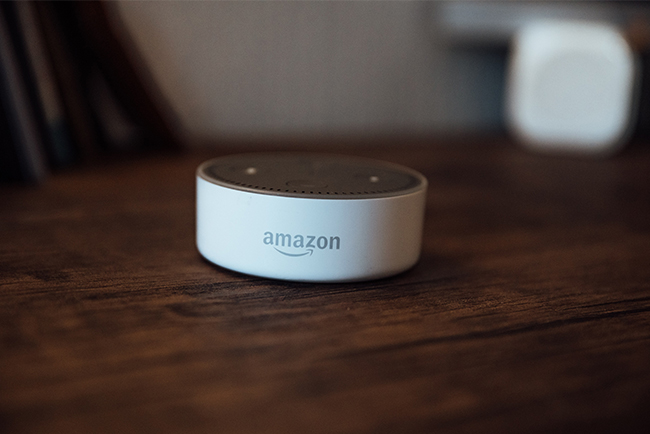What does Emerging Technology mean for Marketing?
In today’s world, there is so much innovation in when it comes to tech, it’s hard to keep up. The way many of us live our everyday lives has completely changed, which has also led to a complete shift in the way we connect and communicate with brands and the internet.
Knowing what technology is worth integrating into your businesses marketing strategy can be tricky. This post highlights some of the most popular technological advancements right now and some statistics that may help you in understanding if they’re worth it for your marketing plan.
Augmented and Virtual Reality

The difference between AR and VR is that augmented reality (AR) adds digital elements to a live view, like some of the filters you may see on Instagram/Snapchat. Virtual reality (VR) is more of a complete immersion of a virtual world, you will wear glasses similar to the image above, and be ‘transported’ to an imagined or real-world scenario.
-The AR/VR market is currently estimated to be worth $1.6 billion (source: IDC)
–61% of shoppers would prefer to shop in stores that offer AR experiences (source: Lumus Vision)
–64% of VR users believe that VR has the most exciting potential in the gaming industry, while 52% believe this for the film and TV industry (source: GlobalWebIndex)
Artificial Intelligence

Many of us don’t even notice how much we interact with AI every day. Most of the targeted adverts we see on the internet are powered by artificial intelligence, and a lot of the instant chat facilities we use to communicate with businesses are AI, too.
-It is predicted that by the end of this year, customers’ will manage 85% of their relationships with enterprises without even interacting with a human. (source: Gartner)
-It is estimated that this year, 80% of businesses will have integrated some form of chatbot automation into their communication strategy (source: HubSpot)
–55% of consumers are excited to interact with businesses who use messaging to solve problems (source: HubSpot)
Voice Assistants and Smart Speakers

A huge number of people now have smart speakers in their home, and if not, then there is a voice assistant built into almost all smartphones. The future of voice searching looks big.
-At the end of 2019, over 20% of UK households had a smart speaker, with over 70% of these owners use them every day (source: Voicebot.ai)
-It is predicted that digital voice e-commerce will rise to an $80 billion industry by 2023 (source: Juniper)
-By 2020, it is estimated that 50% of all internet searches will be done by voice (source: Quora Creative)
Smart Devices and Appliances

Smart appliances can be seen in the form of smart TV’s, thermostats, kettles and more. Some say it’s going too far, while others believe it’s an efficient and simpler future.
-The number of houses with smart appliances is expected to double between now and 2024, with the average users being 25 – 34 years old (source: Statista)
–The most popular smart appliance is the Smart TV (38%). Followed by lighting (17%), thermostats (16%), and security systems (14%) (source: eMarketer)
-In 2018, 70% of all TV’s sold around the world were smart (source: Statista)
The last few years have seen some major changes in the way people live their everyday lives, and the next few years see even more to come. This means the future of marketing will be filled with change and adaptation.
We have to ask ourselves, are television adverts as effective today as video adverts played on catch up TV apps? Do we need to invest as much into voice SEO as search SEO? One thing that’s for sure, it is very important to keep up with the strides of technology and ensure your marketing strategy works for you.
If you’d like to book a strategy meeting and nail down the ways in which to incorporate technology into your brand, then get in touch with LimeGreen Marketing today.

